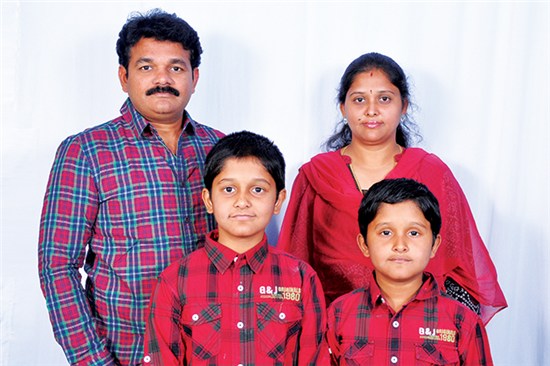
A monthly series in The Finapolis where we talk to a diverse set of families to understand their attitude towards financial planning. Our in-house financial advisor offers his suggestions for a more robust portfolio. If you’d like to talk to us and be featured, write in to: feedback@thefinapolis.com
Mr. Navindra a self-made and hard working entrepreneur, he operates in and manages various business that deal with granite, finance and real estate.
INVESTMENTS
Being a businessman, his income varies through the year, but on an average, he takes home about Rs 12-15 lakh per annum. His family consist of his wife and their two kids, and dependent parents. His elder son is in Class 5 and the younger is in Class 2. Navindra also receives rental income of about Rs 3 lakh. His faith in the India growth story led him to invest in stocks; the corpus today stands at Rs 15 lakh. Additionally, he invests in equity through SIPs to the tune of Rs 25,000 per month. He is also serving an EMI of Rs 28,000 towards the car loan he took a few years ago. Health insurance coverage for his family is of Rs 9 lakh though the family floater policy he has subscribed to, but that doesn’t include his parents. Navindra pays a premium of Rs 1 lakh for many insurance policies (except term-insurance) that he has bought as part of tax saving and investment which gives risk cove rage of about a crore.
THE STRATEGY
Navindra wants his children to get good education from reputed colleges and hopes a part of his investment in mutual fund will take care of the cost of higher education. He and his wife are avid travellers and they have trooped to more than 12 countries till date. In fact, they have made a resolution to travel abroad once every year with friends. They estimate expenses of Rs 1.5-2.5 lakh towards this penchant. When asked about protection of downside risk to his equity investment or whether he also invests in fixed deposits, he says he is at ease and happy with his current portfolio which is providing him good returns
thanks to the bull run at the markets and he doesn’t want to settle for less. He expects his investment to yield a return on investment of 25% to 30% every year.
EXPERT TAKE
Navindra knows the value of hard earned money and has the knack to put it to work. He is doing the right thing by investing in equity and equity-related mutual fund, but he is not diversifying enough to mitigate the risks associate with equity. Even though he is an aggressive investor, he needs to allocate some portion of his saving into debt instruments (FD, FMP, Debt Fund, Bond, PPF etc) too. He seems to use direct equity for trading and not for long-term investing. A long-term perspective helps in creating sustainable wealth over time. Depending on the broker’s advice works well in a bull market like the one we are witnessing now, but when comes the bear market, profits will vanish into thin air.
The expectation for future long-term sustainable returns should be somewhat in line with GDP growth plus risk premium; Navindra should hence have a reasonable expectation of around 13-15% returns, achievable with his current investment provided he keeps it intact and does not cash out once the market turns downwards. He can certainly attempt higher return targets, but only after understanding that it comes with higher risk of losing capital and also additional effort.
He should consider investing in debt mutual fund which looks very promising now given the falling yield curve. Navindra’s portfolio also needs to include some contingency fund towards unforeseen events. The sufficient medical coverage for his family is commendable. We however suggest never mix insurance with investment. Ideally, an earning person with a dependent need only have term insurance covering 15-20 times his annual income; Navindra can thus save nearly Rs 80,000 per year.
Education inflation is way above CPI inflation in India. Assuming it costs Rs 10 lakh for a good B-school or engg. education today and a 10% increase in the cost of higher studies every year, after seven years, cost will be close to Rs 19.5 lakh, and after ten years, around Rs 26 lakh. Navindra needs to invest Rs 29,500 per month in that sense. For the other goal of travelling, he can put a part of his money in short-term funds with 7-8% yield.
Overall, Navindra is doing well on personal finance, but needs to look for the required balance in his portfolio.
A word of advice for the wise – for the current market situation, remember what Warren Buffet said, “Only when the tide goes out do you discover who’s
been swimming naked’’
Assumption: ROI @ 12% P.A, time horizon for elder son’s education-7 years, younger son-10 years)